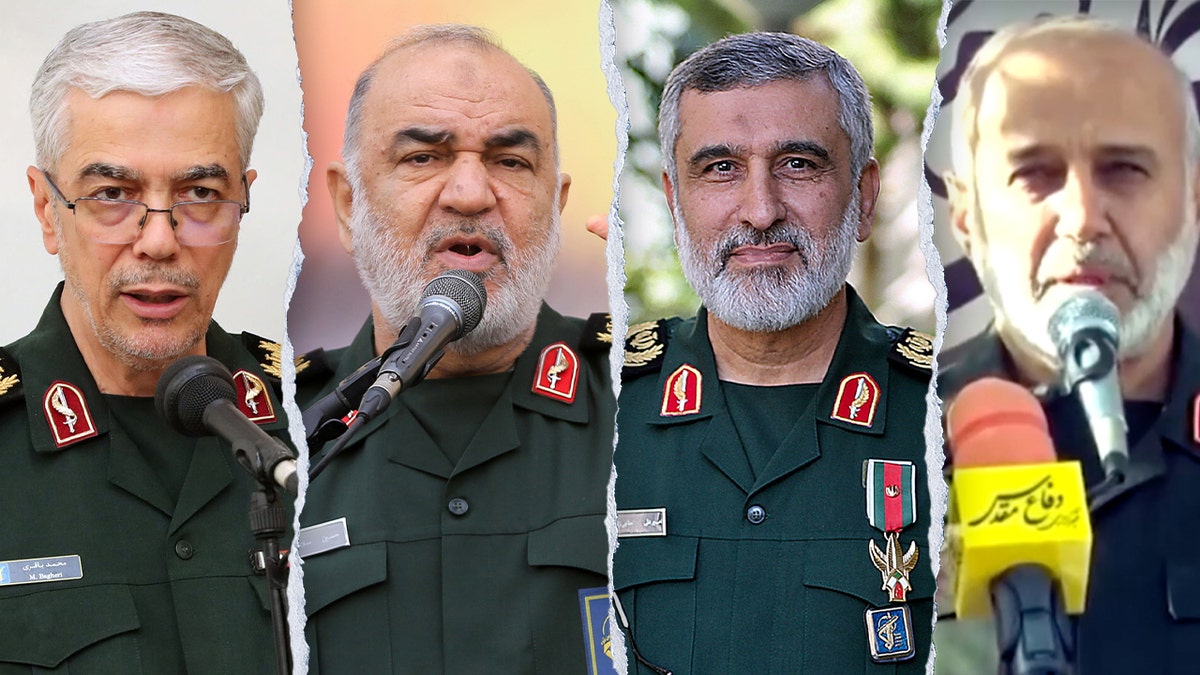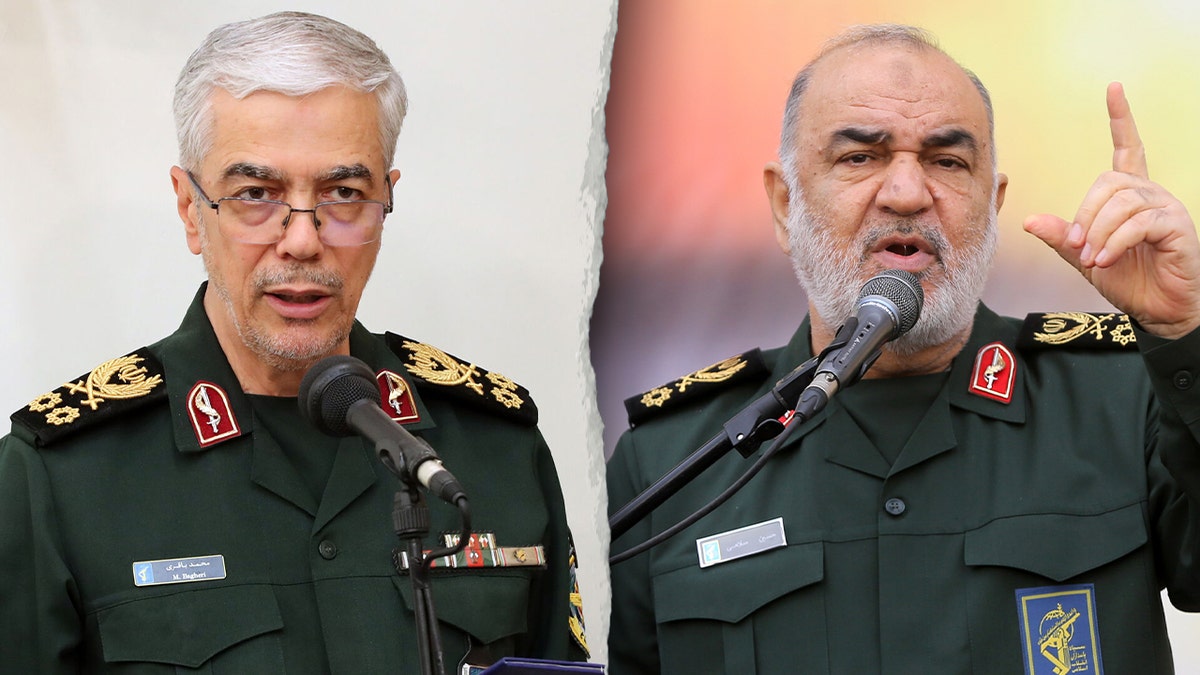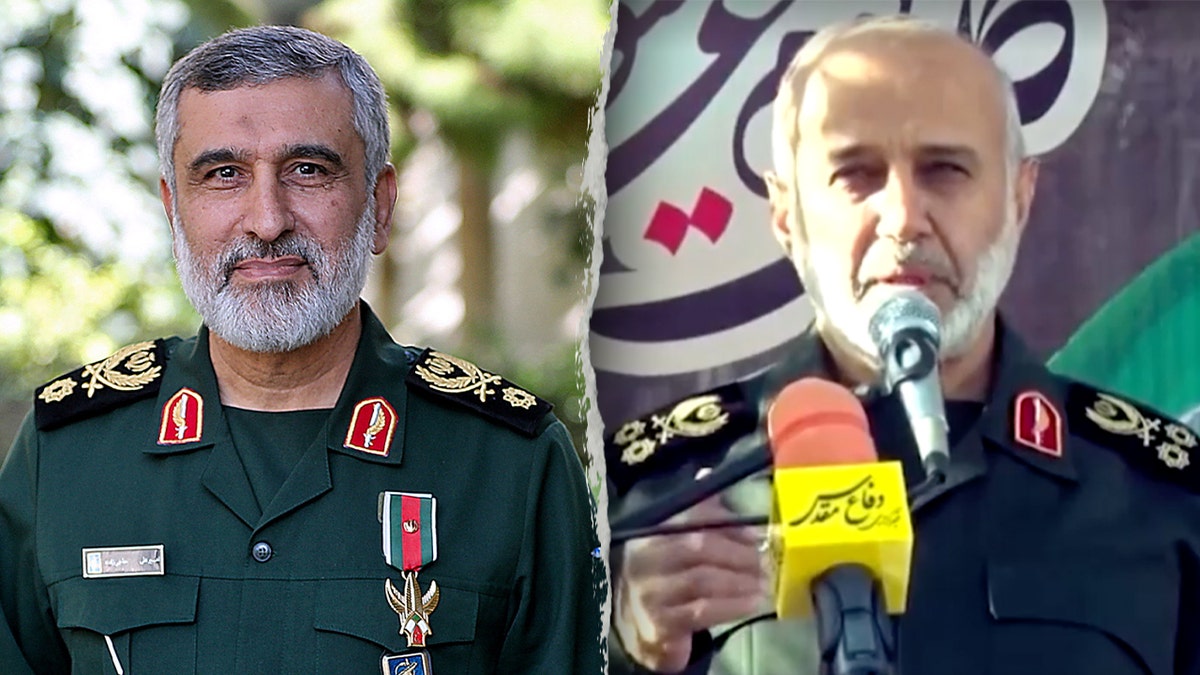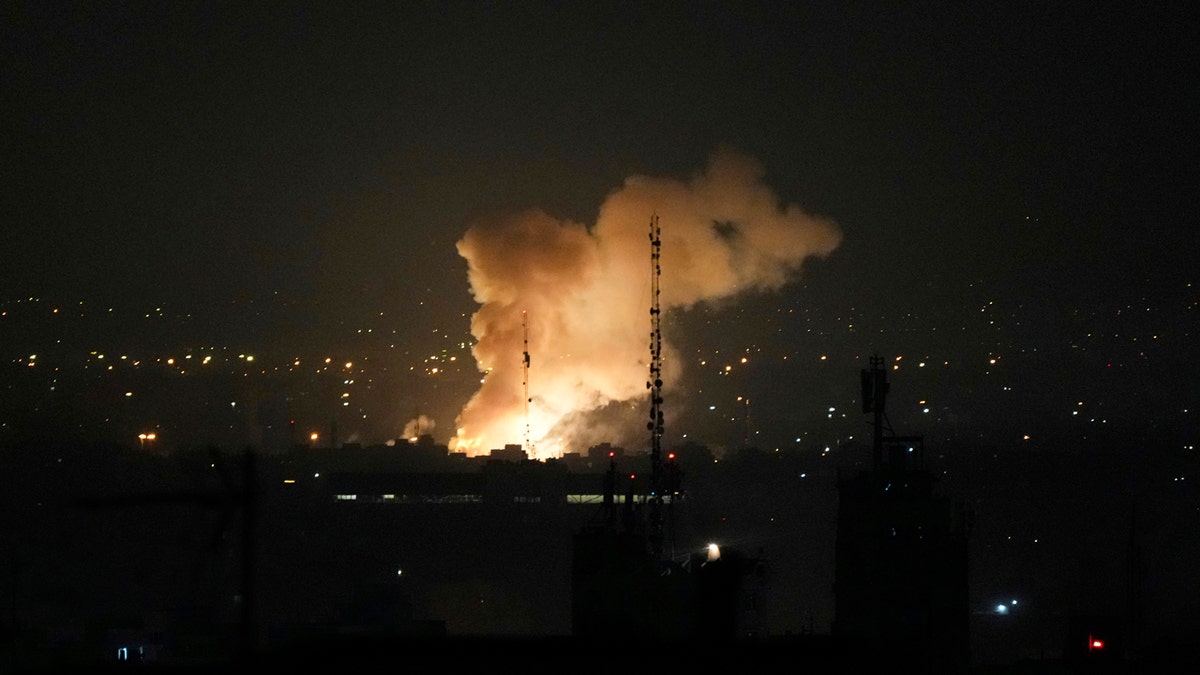
NEWYou can now listen to Fox News articles!
Israel’s targeted attacks on Iran’s nuclear and missile infrastructure early Friday took out at least 20 senior Iranian commanders, inflicting a significant blow to Tehran’s governing theocracy.
The Israel Defense Forces strikes took out Gen. Hossein Salami, the leader of the Islamic Revolutionary Guard Corps (IRGC), who had a history of threatening the U.S. and Israel.
Gen. Mohammad Bagheri, the chief of staff of the Iranian armed forces, was also killed. His death further escalates the gravity of the strikes and their implications for Iran’s military structure.
Ali Hajizadeh, the head of the IRGC Aerospace Force, was also killed, as was Lt. Gen. Gholamali Rashid, who was the head of the IRGC’s Khatam-al Anbiya Central Headquarters, which coordinates joint Iranian military operations.

Gen. Hossein Salami, Gen. Mohammad Bagheri, Brig. Gen. Amir Ali Hajizadeh and Lt. Gen. Gholamali Rashid. (Reuters)

Islamic Revolutionary Guard Corps (IRGC) Commander-in-Chief Major Gen. Hossein Salami, third from right, and Iranian Armed Forces Chief of Staff, Major Gen, Mohammad Bagheri, far right, are seen during a meeting with Iran’s Supreme Leader, Ayatollah Ali Khamenei in Tehran, Iran, on April 21, 2024. (Office of the Iranian Supreme Leader/WANA/Reuters)
ISRAEL LAUNCHES ‘OPERATION RISING LION’ ON IRAN, TARGETING NUCLEAR FACILITIES, TEHRAN
Their deaths came amid Israeli Defense Forces launched a sweeping strike on Iran, called “Operation Rising Lion.” It followed months of attempted, and seemingly failed, nuclear negotiations between the Trump administration and Tehran. Israel said it launched the strikes to target Iran’s nuclear and missile infrastructure.
Gen. Hossein Salami, commander-in-chief of the IRGC
Salami was the commander-in-chief of the IRGC since his appointment in 2019 by Supreme Leader Ayatollah Ali Khamenei, overseeing Iran’s elite military force.
His appointment came shortly after President Donald Trump pulled out of the Iran nuclear deal and designated the IRGC as a terrorist organization.
Salami first joined the IRGC during the Iran-Iraq War in the 1980s, rising through the ranks to lead the IRGC’s air forces and later its entire command.
The IRGC is one of the country’s most powerful centers. It was created after its 1979 Islamic Revolution and has evolved from a paramilitary, domestic security force into a transnational force that has come to the aid of Tehran’s allies in the Middle East, from Syria and Lebanon to Iraq, per the Times of Israel.
It operates in parallel to the country’s existing armed forces. It controls Iran’s arsenal of ballistic missiles, which it has used to attack Israel twice during the Israel-Hamas war in the Gaza Strip.
ISRAEL HITS THE ‘HEART’ OF IRAN’S NUCLEAR PROGRAM IN NATANZ FACILITY STRIKE
Under Salami’s leadership, the IRGC evolved into a powerful transnational force, deeply involved in supporting Iran’s regional allies in Syria, Lebanon and Iraq. The Guard also maintains control over Iran’s expansive ballistic missile arsenal, which has been deployed in strikes against Israel — most notably during the Israel-Hamas war — and serves as a central pillar of Iran’s deterrence strategy.
Salami was also known for his aggressive rhetoric toward both Israel and the United States, publicly calling for the destruction of Israel as early as 2016. After the U.S. killed Qassem Soleimani, commander of the IRGC’s elite Quds Force, in a 2020 drone strike, Salami vowed retaliation. Just five days later, Iran launched ballistic missiles at U.S. bases in Iraq and warned that American and Israeli commanders would be targeted in future reprisals.
In one of the most aggressive actions attributed to him, Salami ordered a massive retaliatory strike last year, launching more than 300 drones and missiles after Israel killed seven Iranian generals in an airstrike on an Iranian diplomatic compound in Syria.

Israel’s targeted attacks on Iran’s nuclear and missile infrastructure early Friday took out several top Iranian generals; Gen. Hossein Salami, the leader of Iran’s paramilitary Revolutionary Guard and Gen. Mohammad Bagheri, the chief of staff of the Iranian armed forces. (Iranian Leader Press Office / Handout/Anadolu via Getty Images, left, and Fatemeh Bahrami/Anadolu via Getty Images, right. )
Gen. Mohammad Bagheri, chief of staff of Iranian Armed Forces
Bagheri has served as the Chief of Staff of the Armed Forces since 2016, coordinating operations across the army, IRGC, and air defenses.
He was a veteran of the 1979 Islamic Revolution and held multiple senior roles in intelligence and strategic command.
Bagheri was instrumental in shaping Iran’s military doctrine and led efforts to modernize its missile and air defense systems. He represented Iran in military coordination with allies like Russia and Syria, particularly during joint operations in the Syrian Civil War.
As the brain behind Iran’s strategic military posture, Bagheri was on Israel’s radar for years as a high-value target.

IRGC Aerospace Force Commander Amir Ali Hajizadeh, left, and Lt. Gen. Gholamali Rashid, right. (Reuters)
Brig. Gen. Amir Ali Hajizadeh, head of IRGC Aerospace Force
Hajizadeh oversaw Iran’s Aerospace Force, a powerful military branch responsible for its ballistic missile arsenal, drone programs and space-based military initiatives. He led the branch since 2009.
The IDF said that Hajizadeh had gathered in an underground command center overnight with other senior officials to prepare for an attack on Israel when IAF fighter jets struck the location.
The IDF said that the IRGC aerospace force was responsible for repeated attacks against Israeli civilians. Notably, Hajizadeh and his subordinates commanded Iran’s direct missile and UAV attacks against Israel in October 2024 and direct missile strike in April 2024.
After Soleimani’s killing, he helped coordinate Iran’s ballistic missile retaliation against U.S. bases in Iraq.

Smoke rises after an explosion in Tehran, Iran, on Friday, June 13, 2025. (AP Photo/Vahid Salemi)
CLICK HERE TO GET THE FOX NEWS APP
Additionally, when Iran shot down a Ukrainian passenger jet in 2020, Hajizadeh publicly accepted blame, saying the mistake was made by a subordinate. All 176 people on board were killed.
Lt. Gen. Gholamali Rashid, commander of Iran’s Khatam al-Anbiya Central Headquarters.
Rashid led the Khatam al-Anbiya Central Headquarters, a key strategic command center within Iran’s military, tasked with planning and coordinating joint military operations within the Iranian forces.
He was a veteran and influential decision-maker during the Iran–Iraq War and later became part of Iran’s senior military leadership network. He was sanctioned by the Treasury Department in 2019.
Several nuclear scientists were also killed in the strikes, representing a significant blow to Iran’s nuclear development program.
The Associated Press contributed to this report.
 Latest Breaking News Online News Portal
Latest Breaking News Online News Portal






